some History ................
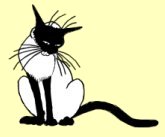
The Siamese, a Royal cat
It was once, in the country of Siam's the Kingdom
, unique, rare cats of a beauty in their look.
Privilege of the royal family and the upper middle class, these cats were carefully
kept in the royal palace.
The Siamese would have been represented on a manuscript coming from Ayuthia (capital of Siam)dating from 1350. One also would have discovered in Russia between 1793 and 1794 drawn on an old engraving.
Many legends tell the appearance of the Siamese :
with which one told by George Cansdale "the animals and the men" who says that at the time of the voyage on Noah's Ark, a monkey would have fallen in love with a lioness. It would be the reason for which we can hear that Siamese has the agility of a monkey and the courage of a lioness!
The legend says that the Siamese had a light strabism at its origins because it savagely kept the royal treasures of Siam; he fixed them with an attention such as he had a squinting.
The legend also wants that the tail of Siamese is dressed up of a node or a break. Due, the royal princesses hung their rings around the tail of the cat in order not to lose them during the bathe.
The Siamese cats (in Thaï : วิเชียรมาศ or wichien-maat), that we can translate either into "Moon Diamond", or in "Gold and Diamonds") existed during centuries in Siam.
Actually, they are English who was the first fascinated by this breed and was to seek it to Siam to import them on their homes. At the cat-show at the Crystal Palace of July 16, 1871, two Siamese was shown. They were not appreciated at all by the public, because the look was very different from the cats known at that time in England. They were qualified as being a cat of "nightmare", ugly and alarming. Compared with British Shorthair and the Persian cats which were well-known with the majority of the British, these Siamese imports were longer and less "squat" of the body, they had heads which were less round with triangular muzzles and had larger ears. As of their arrival in Great Britain they were called "royal cat of Siam".
The first Siamese known in effective date of 1884, Pho and Mia, but they were not intended for the breeding. It is said that the king of Siam would have made gift of a pair of Siamese to the British vice-consul, who brought them back in England to then give them to his sister Lilian Gould-Veley. She would have written thereafter, that her brother had bought in Siam, one of the two cats for a bid price futil with one going travelling, and not by the king of Siam. The same year, a diplomat also reported two subjects of Bangkok to France.
The years followed one another. The importation the Siamese revealed a passion towards the breed.
All pedigrees of the Siamese cats of today go down from approximately eleven cats which were imported directly of Siam, as far as England about the years 1880. New blood was presented later at the 20th century and more precisely after the last world war, which was devastator near Siamese as well as other breeds besides. However, the eleven originals remained the base of the Siamese pedigree.
It is important to raise that several breeders believed that there were two types (morphologies) of Siamese. Mrs. Veley would have written herself that its cat (Pho) had a rather thin line and that its second cat (Mia) was rather robust and round. Thereafter, Mrs. Carew Cox, a judge of cat-show and founder of the first Siamese club, would have also noted, to see two types of lines : one compact, with a short body, short legs and a round head, while the other with a body and a semi-long, nimble and sinuous head.
English started to hold of the cat-shows and developed standards for the pedigrees of the cats. Mr. Harrison Weir wrote a standard of the Siamese race in 1892 as being a cat of the Eastern type, different from the round British cats. In 1902 the first cat club of race was founded : "the Siamese Cat Club". It was the first time that one made the distinction between the "Royal cat of Siam", describing the color seal point known today, and the "Chocolat cat of Siam", describing the tonkinese or the burmes of today.
|
Sketches in the book of Mr. Harrison Weir, 1889, and chair of "The National Cat Club"
|

WANKEE, first champion Siamese, imported of Hongkong by Mrs Robinson in 1895
|
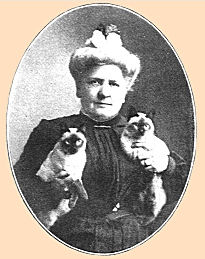
Mrs Clinton Locke, USA
|
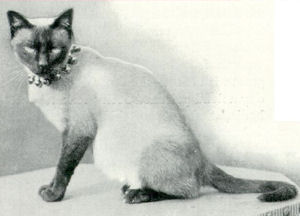
CORA, 1898, up to Mrs Armitage
|
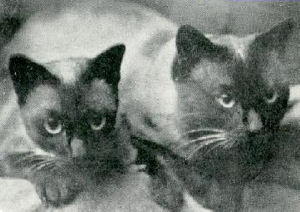
ROMEO et JULIET, of V. Campbell, 1903, England
|
After the First World War, the Siamese was a rather common pet in the families. Many owners were in admiration in front of their cats, and were introduced them into the cat-shows. These Siamese of company was almost always slightly rounder than those of the breeders who named them "Applehead" (name for a bad criticism). Applehead was of type rather close to the Siamese imported originals of Siam; moderated and rounder than the Siamese modern one, but the difference was still tiny.
 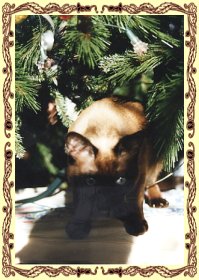 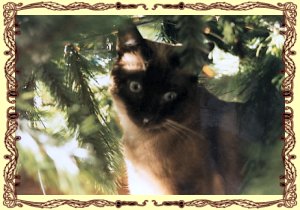 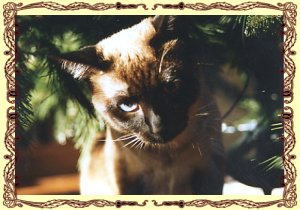
In 1933, a new standard of breed was recorded by "the Siamese Cat Club". And in 1935, the color "blue point " was added as a recognized color. In 1958, the standard was still modified, the colors "chocolate point " and "lilac point " were added.
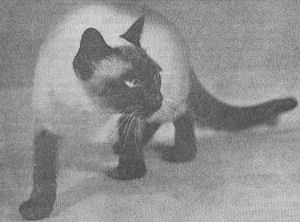
siamese : 1937
|
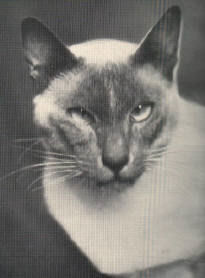
Salween Fairmaid, color : blue point, 1945, (Siamese Cats, Phyllis Lauder 1950)
|
ABOUT THE YEARS 1960 :
The ultra modern siamese appeared and it started to dominate the scenes of the cat-shows. Appleheads disappeared from the hall of show. Thus the old type of Siamese, with a pedigree of a Siamese, could contribute but it was often eliminated for a lack from merit because it did not have the same type of body as the other Siamese ones.
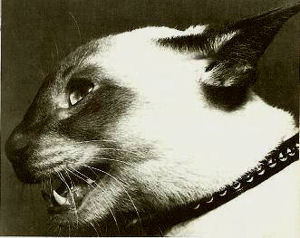
NIAD SOM PHONG, 1960 (picture : "Die Edelkatze" nr 3, 1968)
|
ABOUT THE YEARS 1980 :
The modern Siamese breeders selected the kittens with a more extreme aspect by multiplying them. That gave the modern Siamese that we can see in the shows.
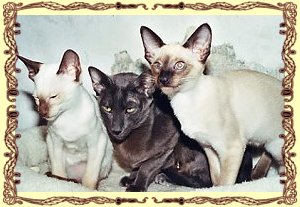 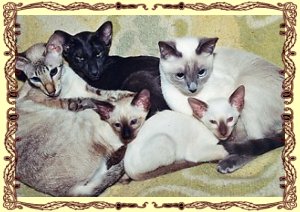
It had become almost impossible to find a applehead with a Siamese pedigree. It was thus right that the breeders of Applehead cats intend to recover the breed. They started to meet to make to recognize the old type of Siamese by the cat associations of the world. The ideas of the breeders differed for the ideal aspect from the original Siamese applehead. Some estimated that it was to have the head and the body of moderated Eastern style, others with a round head and a body more or less like one to British shorthair. The breeders thus said themselves that the applehead was to be the polar opposite of modern Siamese, they thus invented two names in order to recognize them. The version directed towards the round was called "traditional" and the moderate Eastern version was called "classic".
ABOUT THE YEARS 1990 :
Some German breeders met and decided to write a standard of breeding for the "traditional Siamese " which became "THAI". The officialization of the breed was gained in 1990 by the WCF (World Cat Federation), influential cat association.
Some breeders of Thai cats thus started to increase the tiny genetic inheritance of Applehead by intensively crossing it with other breeds. Fortunately, all the Thai breeders did not approve a hybridation of the Siamese appelhead. Those there multiply always only Siamoises lines, working hard to find the lines of pure breed.

You can contact me for more information .
Back to last menu


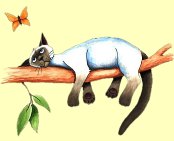
|